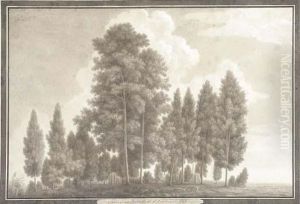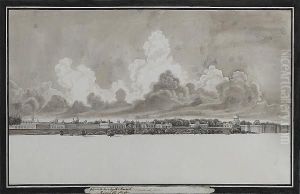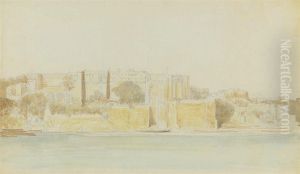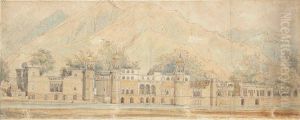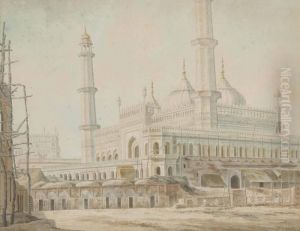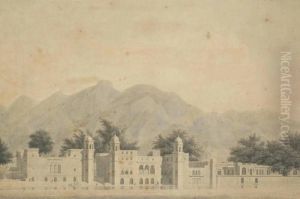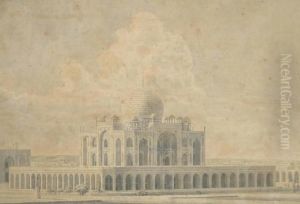Thomas Longcroft Paintings
Thomas Longcroft was an English portrait painter and miniaturist whose work primarily spanned the latter half of the 18th century into the early 19th century. Born in 1739, Longcroft is noted for his detailed and sensitive portrayal of his subjects, often capturing the nuances of their personalities and the intricacies of their attire with a fine brushwork that has drawn comparison with some of his more renowned contemporaries. While not as widely recognized as other artists of his time, Longcroft's contributions to British portraiture and miniature painting have been appreciated by art historians and collectors alike for their elegance and precision.
Longcroft's career was marked by his ability to adapt to the evolving tastes and artistic styles of his era, transitioning smoothly from the grand manner of early Georgian portraiture to the more intimate and personal style that characterized the late 18th and early 19th centuries. Despite the limited information available on his personal life and training, it is believed that he was largely self-taught, which makes his mastery of technique and his keen eye for detail all the more remarkable. His clientele mainly consisted of the gentry and nobility, for whom he painted not only individual portraits but also family groups, capturing the fashions and interiors of the period with accuracy and flair.
Throughout his career, Longcroft exhibited his works at various prestigious venues, including the Royal Academy, although he never became a member. His paintings today can be found in private collections and in some museums, where they are valued for their historical significance as well as their artistic merit. Thomas Longcroft passed away in 1812, leaving behind a legacy of work that continues to be studied and admired for its contribution to the development of portrait painting in Britain. Despite the challenges of the time and the competitive nature of the art world, Longcroft's dedication to his craft ensured that his work endured, offering a window into the world of 18th-century England and the people who inhabited it.
